Brazilian half-sun natural pectin removal method volcano treatment
Professional coffee knowledge exchange more coffee bean information please follow the coffee workshop (Wechat official account cafe_style)
Due to its vast territory and huge output, solarization has long been the main treatment in Brazil, and washing can not support the production of such a large amount of coffee beans. This also gives the industry the habitual thinking of shoddy Brazilian coffee (but it does not mean that all Brazilian coffee is cheap, and the coffee produced by famous estates is also quite good). Since 1990, half-sun (or semi-water washing) has been advocated in Brazil, that is, after removing defects and floating fruits through a sink, peel, pulp and part of pectin are removed by machine, then washed and finally dried or dried in a drying room. Compared with the water washing method, the half-sun method saves water and labor, which has greatly improved the quality of Brazilian coffee, reversing the bad criticism of Brazilian coffee after years of rough sun exposure.
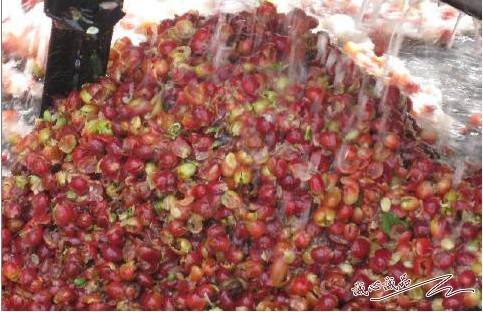
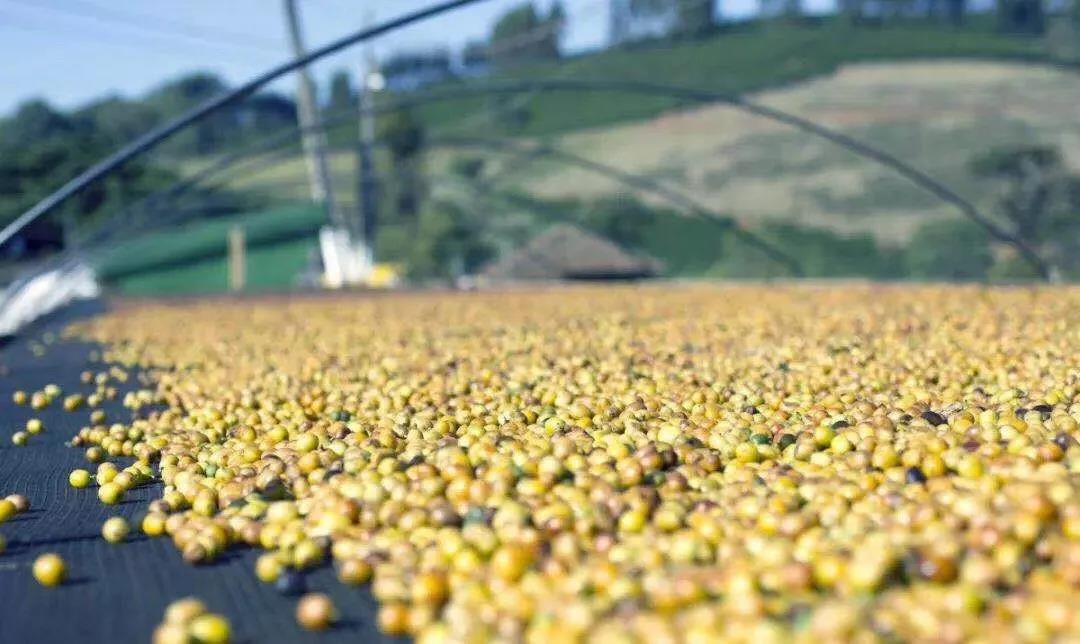
The sun with better conditions will be isolated from the earth with a net bed.
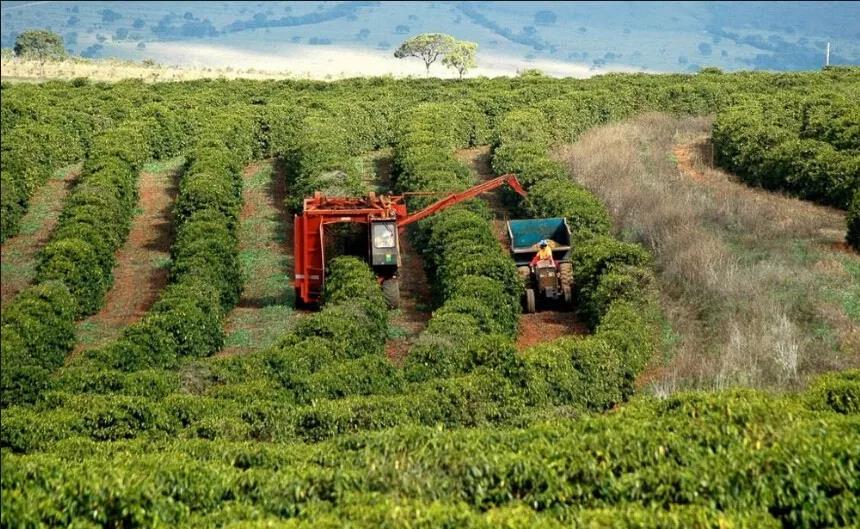
Brazilian coffee fields are endless and are mostly harvested mechanically in order to meet the economic benefits. When 75% of the coffee fruit in the coffee garden is ripe, mechanical harvesting is started, followed by the same pre-washing operation, which is moved into the sink to remove floating beans, sift out the sunken beans, and then use a large pulp screening machine to dig out the pulp and remove the pods covered with pectin. The next stage is separate from the washing method: the sticky pods do not need to be moved into the tank to ferment, but to the outdoor bean drying farm. Because of the dry climate in Brazil, the sticky pectin on the pods will harden in about a day or so. Then use a large number of manpower to turn up and down, so that the pods dry evenly inside and outside, so as not to return to moisture and stink. In about two to three days, with the help of the natural force of the sun pass and dry climate, the pods can achieve a certain degree of dehydration. Then further dry with a dryer, the water content is reduced to 10.5%, and the pods are stored in a special container for about 10 days to further mature, in order to stabilize the quality, remove sheep skins (pods) before export, remove coffee beans, and pack them in stages.
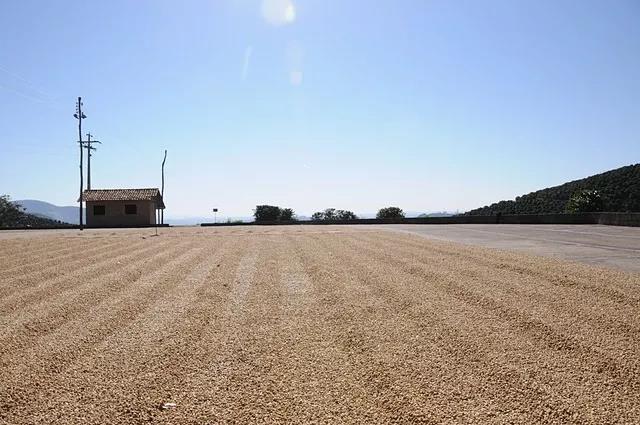
Coffee without peel and pulp will be spread in slices.
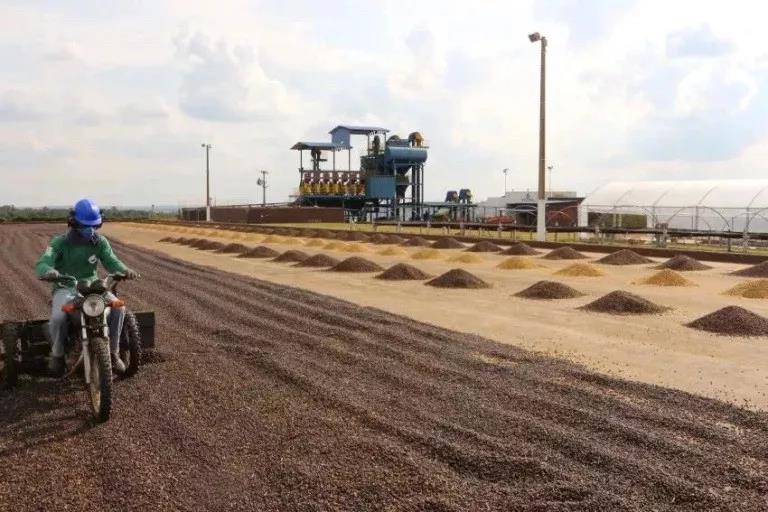
Brazilian half-sun is sometimes called volcano treatment because workers regularly pile up coffee beans into hills and then re-spread them after a period of time to ensure that all coffee beans are evenly dried.
Important Notice :
前街咖啡 FrontStreet Coffee has moved to new addredd:
FrontStreet Coffee Address: 315,Donghua East Road,GuangZhou
Tel:020 38364473
- Prev
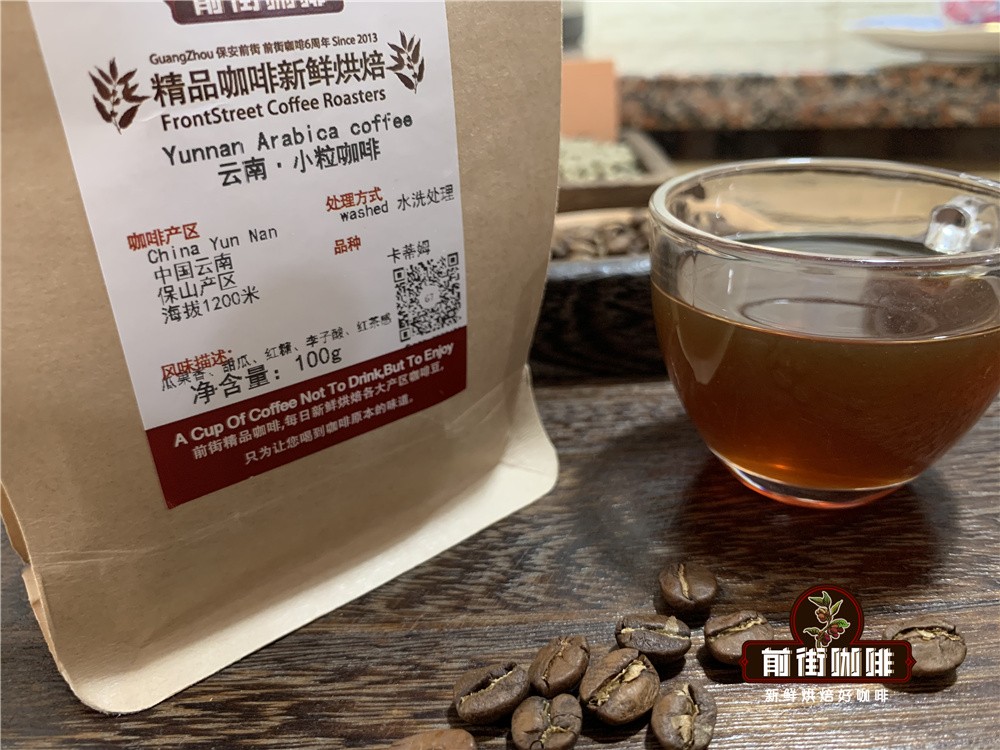
Introduction to the basic knowledge of Yunnan Fine Coffee Bean varieties description of hand-made taste of Yunnan small-grain coffee
[scientific name] small grain species are CoffeaarabicaL., medium grain species are Coffeacanephora, large grain species are Coffealiberica family genus: Rubiaceae Coffea [alias] small grain species, also known as Arabian species, medium grain species also known as Gaffra species, large grain species also known as large seed species
- Next

Introduction of premium gold medal of boutique coffee and blue mountain coffee with charcoal culture
Super Blue Mountain Coffee details: ◆ Origin: Caribbean Central America ◆ roasting method: City Roast ◆ characteristics: mellow, full aftertaste ◆ choose Central American high-altitude coffee beans with similar flavor properties to pure Blue Mountain coffee, blending coffee from Jamaica Blue Mountain coffee producing areas, special roasting design adopts City Roast, both in flavor and taste, and pure
Related
- Detailed explanation of Jadeite planting Land in Panamanian Jadeite Manor introduction to the grading system of Jadeite competitive bidding, Red bid, Green bid and Rose Summer
- Story of Coffee planting in Brenka region of Costa Rica Stonehenge Manor anaerobic heavy honey treatment of flavor mouth
- What's on the barrel of Blue Mountain Coffee beans?
- Can American coffee also pull flowers? How to use hot American style to pull out a good-looking pattern?
- Can you make a cold extract with coffee beans? What is the right proportion for cold-extracted coffee formula?
- Indonesian PWN Gold Mandrine Coffee Origin Features Flavor How to Chong? Mandolin coffee is American.
- A brief introduction to the flavor characteristics of Brazilian yellow bourbon coffee beans
- What is the effect of different water quality on the flavor of cold-extracted coffee? What kind of water is best for brewing coffee?
- Why do you think of Rose Summer whenever you mention Panamanian coffee?
- Introduction to the characteristics of authentic blue mountain coffee bean producing areas? What is the CIB Coffee Authority in Jamaica?

